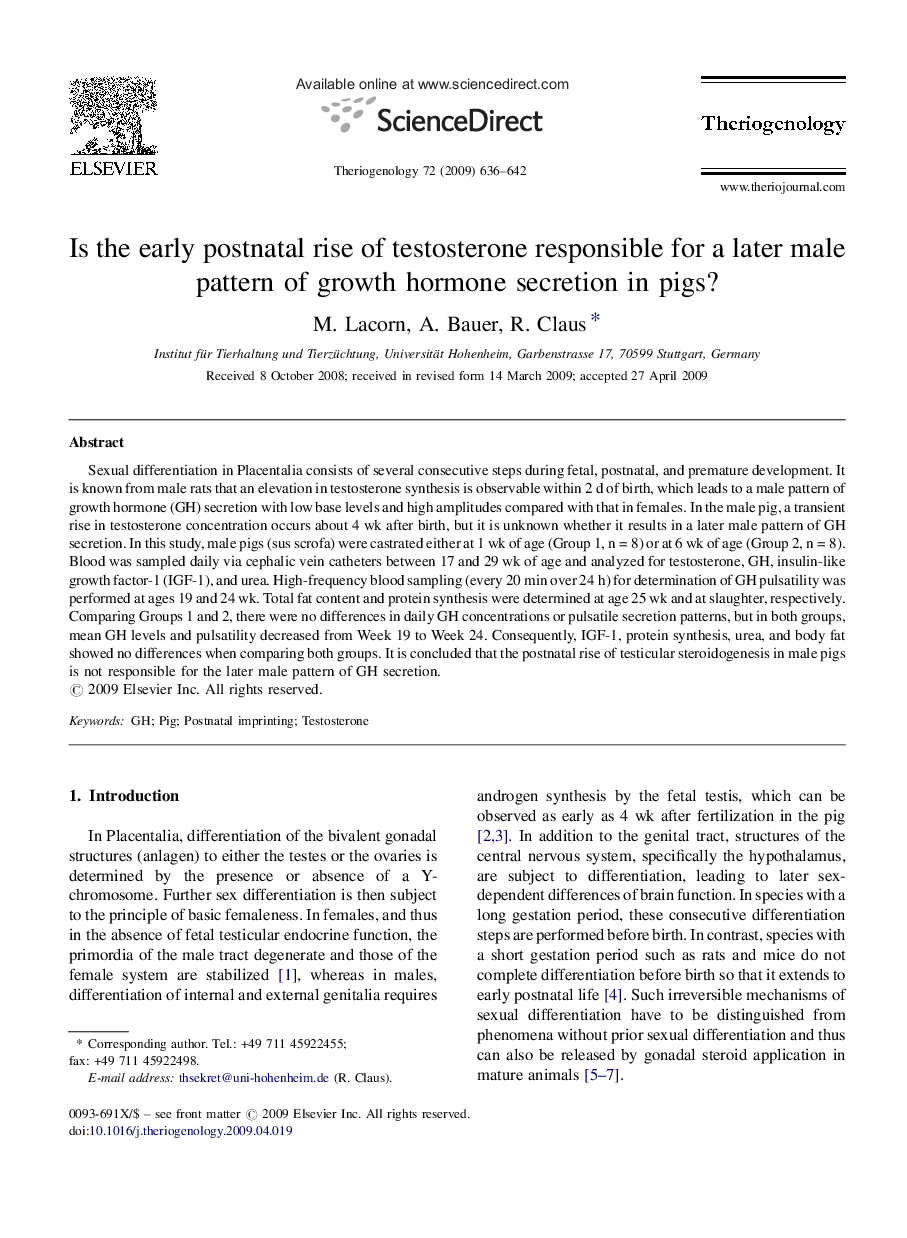| کد مقاله | کد نشریه | سال انتشار | مقاله انگلیسی | نسخه تمام متن |
|---|---|---|---|---|
| 2095628 | 1082129 | 2009 | 7 صفحه PDF | دانلود رایگان |

Sexual differentiation in Placentalia consists of several consecutive steps during fetal, postnatal, and premature development. It is known from male rats that an elevation in testosterone synthesis is observable within 2 d of birth, which leads to a male pattern of growth hormone (GH) secretion with low base levels and high amplitudes compared with that in females. In the male pig, a transient rise in testosterone concentration occurs about 4 wk after birth, but it is unknown whether it results in a later male pattern of GH secretion. In this study, male pigs (sus scrofa) were castrated either at 1 wk of age (Group 1, n = 8) or at 6 wk of age (Group 2, n = 8). Blood was sampled daily via cephalic vein catheters between 17 and 29 wk of age and analyzed for testosterone, GH, insulin-like growth factor-1 (IGF-1), and urea. High-frequency blood sampling (every 20 min over 24 h) for determination of GH pulsatility was performed at ages 19 and 24 wk. Total fat content and protein synthesis were determined at age 25 wk and at slaughter, respectively. Comparing Groups 1 and 2, there were no differences in daily GH concentrations or pulsatile secretion patterns, but in both groups, mean GH levels and pulsatility decreased from Week 19 to Week 24. Consequently, IGF-1, protein synthesis, urea, and body fat showed no differences when comparing both groups. It is concluded that the postnatal rise of testicular steroidogenesis in male pigs is not responsible for the later male pattern of GH secretion.
Journal: Theriogenology - Volume 72, Issue 5, 15 September 2009, Pages 636–642